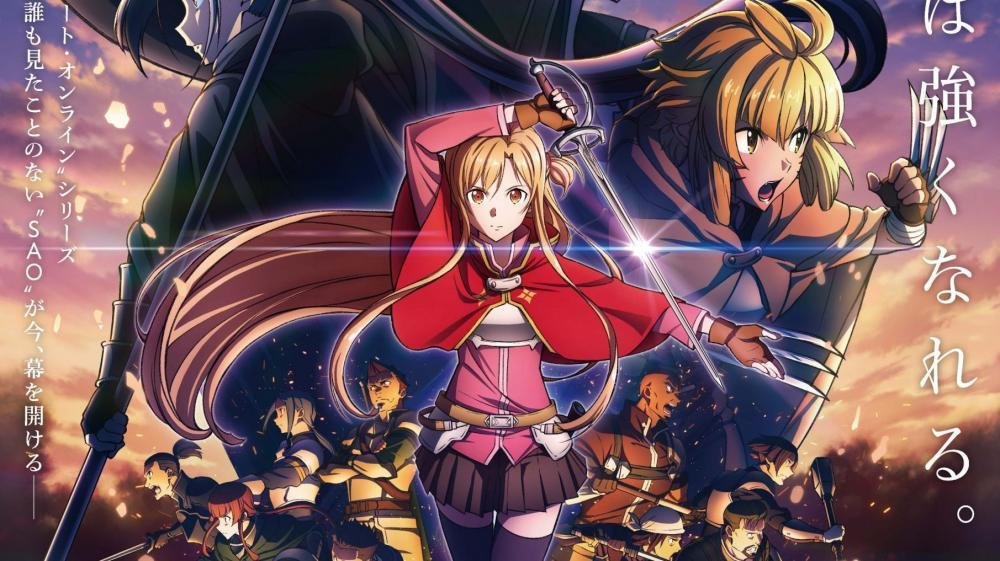Why Some Viewers Dislike Sword Art Online: An In-Depth Analysis
Sword Art Online (SAO) has emerged as a significant cultural phenomenon within the anime community, particularly among fans of science fiction and isekai genres. Despite its popularity, the series has garnered considerable criticism, leading many viewers to express their disdain. This article delves into the reasons behind the mixed reception of Sword Art Online, exploring various aspects that contribute to the negative perception among certain audience segments.
The Disappointment of Aincrad’s Arc
One of the most frequently cited reasons for the discontent surrounding Sword Art Online relates to its handling of the Aincrad story arc. Many fans anticipated a thorough exploration of the 100 levels within the deadly game, hoping to witness each battle and challenge faced by the protagonist, Kirito. However, the narrative quickly transitions away from Aincrad, concluding this arc in just 14 episodes. This abrupt shift left many viewers feeling that a significant opportunity was squandered. While some argue that subsequent arcs delve deeper into thematic elements, the rapid pacing of Aincrad’s conclusion remains a sore point for numerous fans.
The Misconception of the Harem Trope
Another common criticism leveled at Sword Art Online involves the portrayal of Kirito as an "overpowered" protagonist surrounded by a harem of infatuated female characters. Critics suggest that this aspect reinforces clichés often found in anime. However, a closer examination reveals that Kirito’s relationships are more nuanced than they appear. The other female characters do not reciprocate his affections, as Kirito remains steadfastly loyal to Asuna from the beginning. Instead, the so-called harem functions more as a group of friends, each with their unique backgrounds and personal growth arcs. Yet, for viewers who do not delve deeply into the narrative, this superficial interpretation suffices to generate criticism.
Challenges in Adaptation and Character Development
The adaptation of Sword Art Online from light novels to anime has not been without its challenges. Many fans express frustration over the loss of character depth that occurs during this transition. The anime version of Kirito, for instance, is portrayed as a generic and overpowered hero, lacking the introspective and analytical qualities found in the novels. This reduction in complexity contributes to the perception that he is poorly written.
Moreover, some scenes in the anime, particularly those involving sexual violence, are depicted more graphically than in the source material. While these scenes aim to convey the brutality of antagonists, their adaptation has sparked discomfort among viewers, leading to accusations that the series relies on "shock value." This discomfort can detract from the narrative’s intent and alienate segments of the audience.
The Social Phenomenon of Hating SAO
An interesting social dynamic surrounds the criticism of Sword Art Online. The series has become a "target" for backlash primarily due to its immense popularity. Similar to other mainstream anime like Naruto and Demon Slayer, SAO attracts a wide audience, including newcomers to the genre. This influx of casual viewers has, in turn, led to a backlash from more seasoned anime fans, who often regard the series as overrated. Over time, criticizing SAO has developed into a sort of movement, fueled by content creators on platforms like YouTube who seek engagement through controversial opinions.
Complex Themes Often Overlooked
Sword Art Online tackles a variety of intricate themes, including depression, trauma, grief, and the disconnection between reality and virtual existence. However, the presentation of these themes within the context of action and teenage romance often leads to misunderstandings. For example, one character, Suguha, is frequently misinterpreted as an example of "gratuitous incest." In reality, her storyline represents a complex journey of emotional confusion and personal growth. This misinterpretation underscores the challenges the series faces in conveying its deeper messages to a diverse audience.
Kirito’s Overpowered Nature: A Double-Edged Sword
Another prevalent critique among viewers is that Kirito’s overwhelming strength diminishes the stakes of the story. He rarely faces defeat, acquires unique skills, and navigates conflicts with relative ease. This portrayal can frustrate viewers who prefer protagonists that evolve gradually, confronting continuous challenges. However, the anime does depict the emotional toll Kirito experiences due to his victories, particularly in the wake of traumatic losses. Unfortunately, these subtleties are often overshadowed by the surface-level interpretation of his character.
Shifting Focus Beyond Sword Art Online
Interestingly, some fans express disappointment that the story seems to stray from the original premise of Sword Art Online as it transitions into other game worlds like Alfheim and Gun Gale Online. Critics argue that the narrative has diverged from its roots, focusing less on the survival aspect of a deadly game. However, the creator’s intention has always been to explore the evolution of virtual worlds and their philosophical implications. While some viewers may have preferred a singular narrative arc, many others appreciate this broader exploration of themes, viewing it as one of the series’ strengths.
A Confluence of Expectations and Criticism
In summary, the mixed reception of Sword Art Online can be attributed to a combination of unmet expectations, adaptation issues, and the phenomenon of its overwhelming popularity. The series stands as a classic example of how a show can achieve remarkable success yet provoke polarized discussions within the anime community. The intricacies of its themes, character arcs, and narrative structure invite diverse interpretations, making it a focal point for both admiration and critique.
As viewers continue to engage with Sword Art Online, the debate around its merits and flaws persists, illustrating the dynamic and often contentious nature of anime fandom. Whether loved or loathed, Sword Art Online remains an enduring part of anime culture, prompting ongoing conversations about storytelling, character development, and the complexities of virtual worlds.
